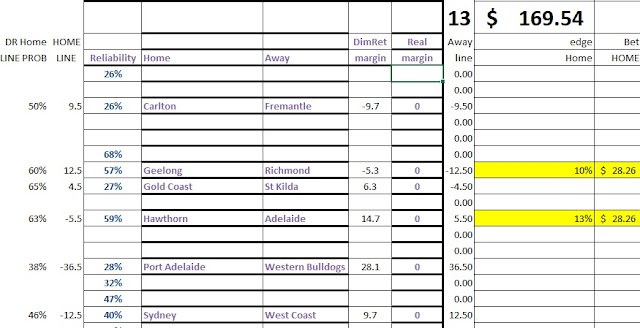The Gambling Drunkard Problem - NEW betting strategy
The wandering drunkard is the base problem for a LOT of Statistical Physics.
Have a read
https://medium.com/i-math/the-drunkards-walk-explained-48a0205d304
Essentially the mathematics of a "item" with a probability of stepping right (winning) or stepping left (losing), then repeating forever.
So if we have a succession of bets lined up that we "know" the probability of winning (say 0.6) then what % of the betting pool should each bet be to maximise profit?
If you bet 100% of the pool each time, very quickly you have no money at all.
Conversely, if you bet 0.000001% of the pool each time, well your pool will barely change size.
So for a given probability of winning, what is the best fractional bet for "the next step"?
A numerical analysis solution (over a thousand simulated bets, starting with $100) yields
if p=0.7 win
fraction bet = 68% and above => $0 return over time
Otimal bet fraction = 35% return (2x10^35)
if p=0.6 win
fraction bet =33% and above => $0 return over time
Optimal bet fraction 20% return (6x10^9)
p=0.7 return at bet fraction 0.2 = 7x10^21
Historically the Mullumby Defender (pre reliability filter) scored 60% wins, post (70+ %)
Higher return strategy would be to bet 35% on each "next step" bet.
But I will change to the safer 20% of pool on each next bet.
Have a read
https://medium.com/i-math/the-drunkards-walk-explained-48a0205d304
Essentially the mathematics of a "item" with a probability of stepping right (winning) or stepping left (losing), then repeating forever.
So if we have a succession of bets lined up that we "know" the probability of winning (say 0.6) then what % of the betting pool should each bet be to maximise profit?
If you bet 100% of the pool each time, very quickly you have no money at all.
Conversely, if you bet 0.000001% of the pool each time, well your pool will barely change size.
So for a given probability of winning, what is the best fractional bet for "the next step"?
A numerical analysis solution (over a thousand simulated bets, starting with $100) yields
if p=0.7 win
fraction bet = 68% and above => $0 return over time
Otimal bet fraction = 35% return (2x10^35)
if p=0.6 win
fraction bet =33% and above => $0 return over time
Optimal bet fraction 20% return (6x10^9)
p=0.7 return at bet fraction 0.2 = 7x10^21
Historically the Mullumby Defender (pre reliability filter) scored 60% wins, post (70+ %)
Higher return strategy would be to bet 35% on each "next step" bet.
But I will change to the safer 20% of pool on each next bet.


Comments
Post a Comment